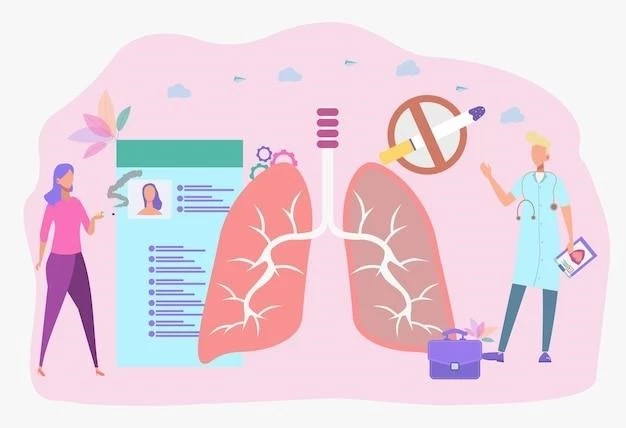Overview of Adult Respiratory Distress Syndrome (ARDS)
Acute respiratory distress syndrome (ARDS) is a life-threatening form of respiratory failure, marked by acute lung injury and severe hypoxemia. Learn more about this condition.
Definition and Pathophysiology
Acute respiratory distress syndrome (ARDS) is a severe form of respiratory failure characterized by acute lung injury, inflammation, and hypoxemia. The pathophysiology involves diffuse lung inflammation, increased capillary permeability, and the development of pulmonary edema. Learn more about the complex mechanisms underlying ARDS.
Causes and Risk Factors
ARDS can be triggered by various causes such as sepsis, trauma, pneumonia, and aspiration, leading to a life-threatening respiratory condition. Understanding the risk factors is crucial for prevention.
Common Triggers for ARDS
Acute Respiratory Distress Syndrome (ARDS) can be initiated by various factors including sepsis, pneumonia, trauma, and aspiration, leading to severe respiratory compromise. Identifying these common triggers is vital for early intervention and management.
Clinical Presentation
ARDS typically presents as acute respiratory failure with symptoms such as severe shortness of breath, rapid breathing, and low oxygen levels. Prompt recognition of these signs is crucial for early intervention.
Recognizable Symptoms of ARDS
When facing ARDS, individuals may experience symptoms such as severe shortness of breath, rapid breathing, and low oxygen levels, which require prompt medical attention. Understanding and recognizing these symptoms are crucial for timely diagnosis and treatment.
Diagnosis and Evaluation
Diagnosing ARDS involves assessing the timing of respiratory failure, severity of hypoxemia, and identifying bilateral pulmonary infiltrates. Proper evaluation is crucial for timely treatment.
Key Criteria for ARDS Diagnosis
Diagnosing ARDS relies on specific criteria including timing of respiratory failure, the severity of hypoxemia, and the presence of bilateral pulmonary infiltrates. Understanding these essential criteria is crucial for accurate diagnosis and effective management of ARDS.
Treatment Approaches
Effective treatment strategies for ARDS include oxygen therapy, mechanical ventilation, fluid management, and pharmacological interventions. Discuss with healthcare professionals for personalized care.
Management Strategies and Therapies
Utilizing effective management strategies and therapies is crucial in treating ARDS. This includes oxygen therapy, mechanical ventilation, fluid management, and targeted pharmacological interventions. Collaborate with healthcare professionals to determine the best treatment plan tailored to your specific condition.
Prognosis and Complications
Understanding the prognosis of ARDS is essential. While the condition can be life-threatening, early treatment and proper management can improve outcomes. Be aware of potential complications and follow medical advice closely.
Outcomes and Potential Risks
Understanding the potential risks and outcomes of ARDS is crucial for patients and healthcare providers. Complications may include prolonged mechanical ventilation, infections, and organ dysfunction, highlighting the importance of early intervention and comprehensive care management.
Latest Research and Innovations
Stay informed about the latest research and innovations surrounding ARDS to understand advancements in treatment and potential breakthroughs. Consult with healthcare professionals for the most current information.
Advancements in ARDS Treatment
Current research emphasizes the importance of early stabilization and lung-protective ventilation strategies in the management of ARDS. Emerging therapies, such as exogenous surfactant administration and cell therapy, show promise in improving outcomes for patients with severe respiratory distress syndrome. Stay informed about these innovative treatments by discussing them with your healthcare provider.
Role of Surfactant and Cell Therapy
Utilizing surfactant and cell therapy can play a crucial role in improving outcomes for patients with ARDS. These innovative treatments show promise in enhancing lung function and recovery. Stay informed about the latest advancements and consult with healthcare professionals for personalized care.
Promising Developments in ARDS Treatment
Recent advancements in ARDS treatment focus on innovative therapies like exogenous surfactant administration and cell therapy, showing potential for improving patient outcomes. Stay informed about these promising developments to explore new options for managing ARDS effectively.
Mechanisms of Lung Instability
Understanding the complex mechanisms of lung instability in ARDS is crucial. Involving diffuse inflammation and hypoxemia, these processes can lead to severe respiratory compromise. Seek medical guidance for personalized insights.
Understanding Lung Function in ARDS
ARDS involves acute hypoxemic respiratory failure with bilateral infiltrates, impacting lung function significantly. Seek medical advice to comprehend the intricate lung dynamics in ARDS and receive appropriate care.
Management Guidelines and Best Practices
Adhering to management guidelines and best practices is crucial in treating adult respiratory distress syndrome. Seek medical advice for personalized care based on the latest recommendations and advancements.
Current Recommendations for ARDS Care
Following the latest clinical practice guidelines for managing patients with ARDS is essential for optimal care. Incorporating new evidence on corticosteroids, venovenous extracorporeal membrane oxygenation, and positive end-expiratory pressure can enhance treatment outcomes. Consult healthcare providers for personalized guidance on the most effective ARDS care strategies.
Impact of Prone Positioning during ECMO
Background⁚ The impact of prone positioning (PP) during venovenous extracorporeal membrane oxygenation (VV-ECMO) in acute respiratory distress syndrome (ARDS) patients is a topic of interest. A recent study aimed to determine if implementing PP within 24 hours of ECMO initiation could improve patient survival. Consult with healthcare professionals for personalized insights.
Benefits of Prone Positioning on ARDS Survival
Prone positioning during venovenous extracorporeal membrane oxygenation (VV-ECMO) has shown potential benefits in improving survival rates for patients with acute respiratory distress syndrome (ARDS). Discuss with healthcare providers to understand the impact of this positioning technique on ARDS outcomes.
Corticosteroids and Other Treatment Modalities
Adopting corticosteroids and other treatment modalities is imperative in managing adult respiratory distress syndrome (ARDS). This includes optimizing patient comfort, maintaining adequate oxygenation, and addressing underlying causes. Consult healthcare professionals for individualized care.
Exploring Alternative Therapies for ARDS
Alternative therapies for ARDS, including corticosteroids, prone positioning, and ECMO, can be beneficial in managing this condition. These approaches aim to improve oxygenation, reduce inflammation, and support lung function. Consulting with healthcare providers can help determine the most suitable alternative treatments for individual cases of adult respiratory distress syndrome.

Neonatal vs. Adult Respiratory Distress Syndrome
Understanding the differences between neonatal and adult respiratory distress syndrome is essential. While premature infants may require replacement lung surfactant, adults may benefit from alternative treatments. Consult healthcare providers for tailored management.
Differences and Similarities in ARDS Presentation
Adult respiratory distress syndrome (ARDS) and neonatal respiratory distress syndrome (NRDS) have distinct presentations despite sharing the term ″respiratory distress syndrome.″ Understanding the unique characteristics and treatments for each condition is crucial for improving patient outcomes. Consult healthcare providers for personalized guidance on managing ARDS and NRDS effectively.
Preventive Measures and Early Intervention
Implementing preventive measures and early intervention strategies is vital in managing adult respiratory distress syndrome (ARDS). Consult healthcare professionals for personalized guidance and timely action to improve outcomes.
Strategies for Avoiding and Managing ARDS
Implementing preventive measures and early intervention approaches can aid in avoiding and managing adult respiratory distress syndrome (ARDS). By focusing on optimizing lung function, addressing underlying conditions, and promoting timely care, individuals can reduce the risk and impact of ARDS. Collaborate with healthcare professionals to develop personalized strategies for effective prevention and management of ARDS.
Long-Term Effects and Rehabilitation
Considering the long-term effects and rehabilitation post-ARDS is crucial for optimizing recovery. Engage in respiratory therapy and follow-up care to ensure comprehensive rehabilitation and improved long-term outcomes. Consult healthcare providers for personalized guidance.
Recovery Process and Follow-Up Care
Recovery from adult respiratory distress syndrome (ARDS) involves comprehensive rehabilitation and close follow-up care. Engaging in respiratory therapy, monitoring lung function, and addressing any lingering symptoms are vital in promoting a successful recovery. Consult with healthcare providers to ensure proper post-ARDS care and support.

Conclusion
In conclusion, adult respiratory distress syndrome (ARDS) is a complex condition that requires timely diagnosis, effective treatment modalities, and comprehensive post-ARDS care for optimal patient outcomes. By implementing preventive measures, early interventions, and personalized management strategies, individuals can enhance their recovery and long-term well-being. Stay informed, collaborate with healthcare professionals, and prioritize follow-up care to address the challenges associated with ARDS effectively.
Summary of Key Points on Adult Respiratory Distress Syndrome
Adult respiratory distress syndrome (ARDS) is a life-threatening condition characterized by acute respiratory failure, severe hypoxemia, and bilateral lung infiltrates. Effective management involves early diagnosis, supportive care, and personalized treatment strategies tailored to each individual’s condition. Understanding the complex pathophysiology, prompt intervention, and comprehensive follow-up care are essential for improving patient outcomes and reducing long-term complications associated with ARDS.
